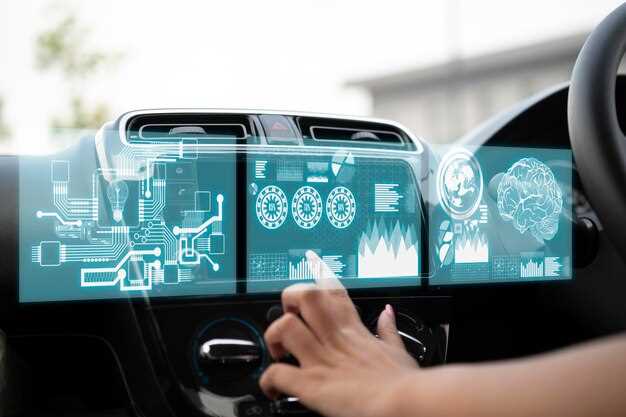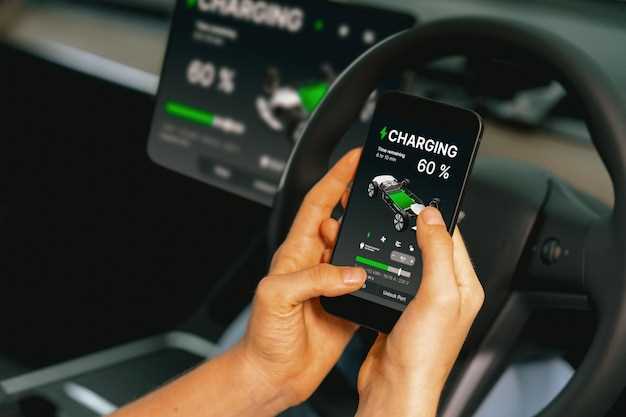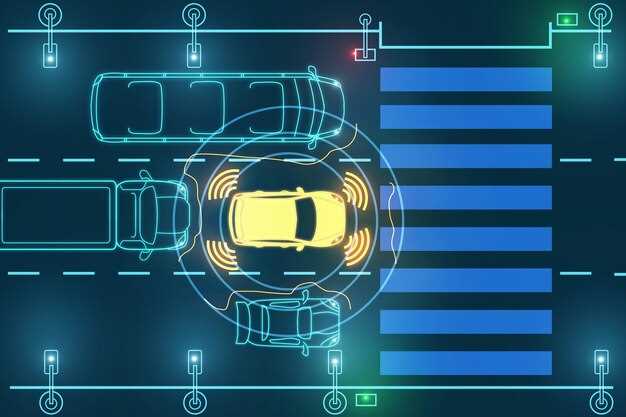
The evolution of race car technology has transformed the way engineers approach vehicle design, particularly with the integration of CAN bus systems. These communication networks play a crucial role in modern race cars, allowing for seamless interaction between various electronic components. By facilitating rapid data exchange, CAN bus systems ensure that critical information from sensors is transmitted efficiently and accurately, enhancing overall vehicle performance.
At the core of a typical CAN bus system is its ability to connect different components, such as engines, braking systems, and telemetry units. This interconnectedness allows a race car to monitor and respond to real-time data from numerous sensors, leading to improved handling and responsiveness on the track. Understanding the workings of these systems enables engineers and racing teams to optimize vehicle performance, making it essential knowledge for anyone involved in the motorsport industry.
Moreover, the reliability of CAN bus systems in high-speed environments cannot be overstated. Given the extreme conditions encountered during races, the durability and efficiency of data transmission are paramount. By exploring the architecture of these systems and their integration with advanced sensors, we can uncover how they contribute to the success and competitiveness of modern race cars, propelling them to new heights in performance and innovation.
Overview of the CAN Bus Architecture Used in Racing
The Controller Area Network (CAN) bus architecture is a critical component in modern racing cars, enabling efficient communication between various electronic systems. This architecture is particularly well-suited for high-performance environments where reliability and speed are paramount.
At its core, the CAN bus consists of a multi-master, message-oriented protocol that allows multiple devices, such as sensors and controllers, to communicate with each other without requiring a host computer.
The key elements of the CAN bus architecture include:
- Data Transmission: CAN operates at various speeds, typically ranging from 125 kbps to 1 Mbps, allowing for real-time data transfer. This is crucial when coordinating the input from numerous sensors.
- Message Prioritization: Messages on the CAN bus are prioritized based on their identifier. Critical information, such as engine performance or safety alerts, can take precedence over less urgent data.
- Error Handling: The CAN protocol includes robust error detection mechanisms, ensuring that data integrity is maintained even in the high-stress conditions of a race environment. This reduces the risk of malfunctions due to data corruption.
Sensors integrated into the CAN bus architecture include:
- Engine Sensors: Monitor parameters such as temperature, pressure, and speed to optimize performance.
- Wheel Speed Sensors: Provide real-time feedback for traction control and stability management systems.
- Fuel Flow Sensors: Measure fuel consumption and efficiency, crucial for race strategy.
- Telematics Sensors: Track vehicle location, performance metrics, and driver behavior for analysis and improvements.
This interconnected system enables teams to gather insights from various sensors rapidly, allowing for timely adjustments during races. The CAN bus facilitates a streamlined approach to data management, supporting both the car’s performance and the team’s strategic decisions.
In summary, the CAN bus architecture in racing cars is essential for effective communication among various electronic systems, primarily through the integration of multiple sensors. This ensures that teams can respond promptly to changing conditions on the track, maintaining a competitive edge.
Key Sensors Integrated into CAN Bus Systems
In modern race cars, the CAN (Controller Area Network) bus is a critical component facilitating communication between various sensors and control units. The integration of key sensors into CAN bus systems enables real-time data processing and enhances overall vehicle performance and safety. Below are some of the essential sensors commonly integrated into these systems:
| Sensor Type | Function | Data Provided |
|---|---|---|
| Accelerometer | Measures acceleration forces | Longitudinal and lateral acceleration data |
| Gyroscope | Monitors angular velocity | Yaw rate and vehicle orientation |
| Wheel Speed Sensor | Tracks the rotation speed of each wheel | Individual wheel speed data |
| Engine Temperature Sensor | Monitors engine coolant temperature | Real-time coolant temperature values |
| Oil Pressure Sensor | Measures oil pressure in the engine | Current oil pressure readings |
| Tire Pressure Monitoring Sensors | Tracks pressure in tires | Individual tire pressure data |
| GPS Sensor | Provides location and speed information | Geographical position and speed data |
The data from these sensors is transmitted via the CAN bus, allowing for efficient communication between the Electronic Control Units (ECUs). This integration leads to improved vehicle dynamics, enhanced safety mechanisms, and optimized performance during races. Overall, the functionality and reliability of CAN bus systems in conjunction with these key sensors play a pivotal role in the performance capabilities of modern race cars.
Data Transmission Speeds and Reliability in Race Conditions

In modern race cars, the Controller Area Network (CAN) bus is a critical component for ensuring efficient communication between various electronic control units (ECUs). The CAN bus operates at standard speeds, typically ranging from 125 kbps to 1 Mbps. These speeds are essential to transmitting real-time data such as engine performance metrics, telemetry, and sensor information, which can significantly impact race outcomes.
Under race conditions, the reliability of data transmission is put to the test due to high speeds, extreme temperatures, and electromagnetic interference. The CAN protocol includes built-in error detection mechanisms that enhance reliability, such as cyclic redundancy checks (CRC) and acknowledgment protocols. These features help ensure that data integrity is maintained, even when subjected to the stresses of racing environments.
To optimize communication in critical racing scenarios, many teams implement higher-bandwidth CAN systems or prioritize specific messages over others using a system of message prioritization. This allows for crucial data, like throttle position or tire pressure, to be transmitted more frequently or with less latency, ensuring drivers and teams receive the most relevant information promptly.
Moreover, redundancy in the CAN architecture can further enhance system reliability. By utilizing multiple CAN buses, teams can safeguard against potential failures or collisions in the data stream, providing a backup path for critical communications and ensuring constant monitoring during high-stakes situations.
In summary, data transmission speeds and reliability play pivotal roles in the performance of modern race cars. The effectiveness of the CAN bus in handling these demands ultimately contributes to competitive advantages on the track, making the understanding of its capabilities essential for racing teams striving for success.
Diagnosing Common Issues in CAN Bus Systems
The Controller Area Network (CAN) bus system is pivotal in modern race cars, enabling communication between various electronic components. However, diagnosing issues within this system is crucial for maintaining optimal performance. Common issues in CAN bus systems can arise from wiring problems, electrical interference, or faulty components.
One of the primary signs of a malfunctioning CAN bus is communication failure among ECUs (Electronic Control Units). To diagnose this, start by checking for any loose or damaged connections within the bus. Physical inspection of cables and connectors is essential, as damage can lead to signal degradation or loss.
Electrical noise can also affect the CAN bus performance. For instance, racing environments often include strong electromagnetic interference (EMI) from other systems. Using an oscilloscope to monitor the signal quality can help identify distortions or irregularities in the waveform, indicating the presence of EMI or grounding issues.
Furthermore, the CAN bus operates based on specific protocols that dictate how messages are transmitted. If a particular ECU fails to send or receive messages, checking its configuration and software integrity is necessary. A common tool used for troubleshooting is the CAN bus analyzer, which can provide detailed insights into message traffic and error rates.
In addition, error frames can appear if there are too many conflicts on the bus. Monitoring error counters on the ECUs can help diagnose the system status and pinpoint any recurring issues. Implementing both hardware and software diagnostics ensures a comprehensive evaluation of the CAN bus system.
By systematically addressing these areas, engineers can effectively troubleshoot and resolve common CAN bus issues, enhancing the performance and reliability of race cars on the track.
Optimizing Sensor Data for Performance Analysis
The CAN bus system plays a crucial role in modern race cars, enabling the efficient transmission of sensor data necessary for real-time performance analysis. Optimizing this data involves several strategic steps to ensure the reliability and accuracy of the information being communicated.
First, selecting the right sensors is essential. High-quality sensors with rapid response times can provide the necessary data granularity to enhance feedback. These sensors are connected through the CAN bus, allowing them to communicate effectively without significant delays, which is critical during intense racing conditions.
Data filtering and processing algorithms should also be implemented to refine the raw sensor readings. Filtering helps eliminate noise and irrelevant data, providing a clearer picture of the vehicle’s performance metrics. Algorithms that utilize time-series analysis allow teams to identify trends and detect anomalies in real-time, facilitating quick decision-making.
Efficient data logging is another aspect of optimization. Storing only critical parameters and reducing the sample rate for less important metrics can save bandwidth on the CAN bus, ensuring that high-priority data has the necessary transmission speed. This selective logging enhances the overall data quality and allows for extensive post-race analysis.
Furthermore, the configuration of the CAN bus network is vital. Establishing a hierarchical structure that prioritizes critical sensor data can prevent bottlenecks in communication, ensuring that essential information reaches the onboard computers without delay. Proper termination and wiring practices are necessary to minimize signal degradation across the bus.
Finally, thorough analysis of the collected data post-race can provide insights into vehicle performance and driver behavior. By employing machine learning techniques on historical data sets, teams can predict vehicle dynamics under different conditions and optimize setups for future races. This continuous improvement loop is key to maintaining a competitive edge.
Future Trends in CAN Bus Technology for Motorsports

The evolution of CAN bus technology is pivotal for the advancement of motorsports, integrating increasingly sophisticated sensors to enhance vehicle performance and data acquisition capabilities. Future trends indicate a significant shift towards higher bandwidth CAN protocols, such as CAN FD (Flexible Data Rate), allowing for faster data transmission rates, which are essential for real-time analysis and response in racing environments.
As motorsports teams strive for competitive edges, the integration of advanced sensors will become more prevalent. These sensors will monitor tire pressure, temperature, and vehicle dynamics, feeding data into the CAN bus system for immediate processing. This real-time data collection will enable teams to make quick adjustments to strategy, improving performance on the track.
Moreover, the rise of AI and machine learning technologies will drive further innovations in CAN bus applications. By analyzing historical data collected through the sensors, AI algorithms can predict optimal settings for various racing conditions, resulting in enhanced decision-making during races. This predictive analysis will rely heavily on the efficiency and reliability of the CAN bus systems.
Another notable trend is the increasing adoption of wired and wireless hybrid CAN systems. With the advent of IoT in motorsports, teams will facilitate communication between vehicles and pit crews through cloud-connected CAN networks. This approach will not only streamline operations but also enhance safety measures by providing real-time telemetry to remote servers for analysis.
Additionally, the implementation of cybersecurity measures in CAN bus technology will become critical. As motorsport environments become more connected, ensuring the integrity of data transmitted through the CAN bus will be essential to prevent malicious attacks or data tampering, ensuring fair competition.
In conclusion, the future of CAN bus technology in motorsports looks promising, characterized by increased sensor integration, higher data transmission rates, AI-driven insights, and a focus on cybersecurity. These advancements will not only optimize vehicle performance but also redefine the strategies employed in modern racing.



